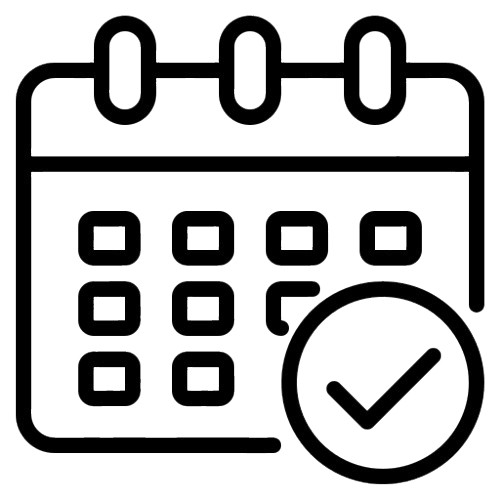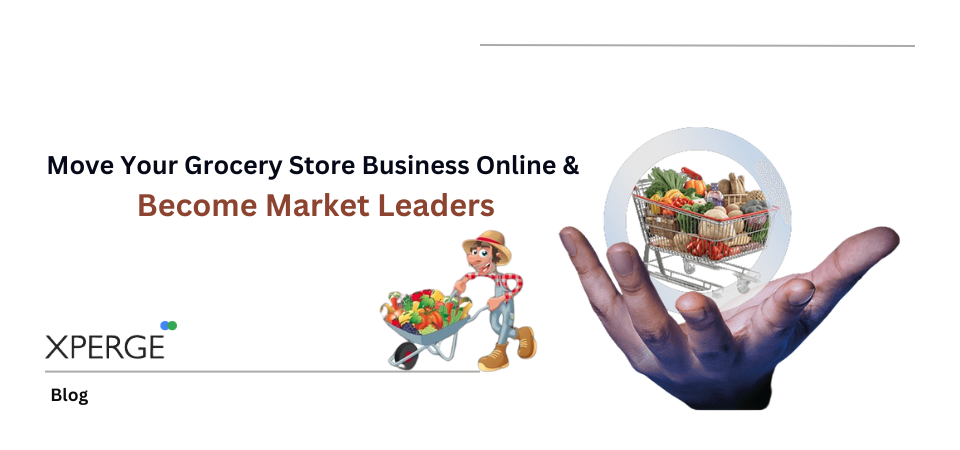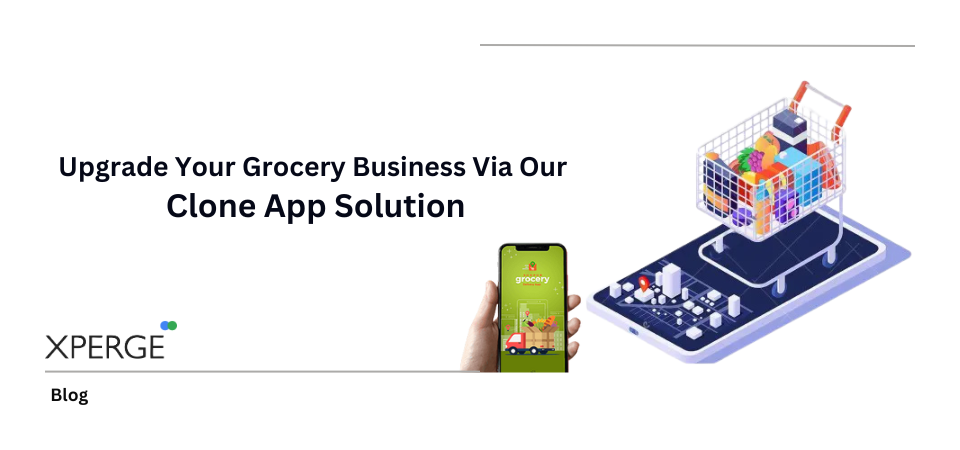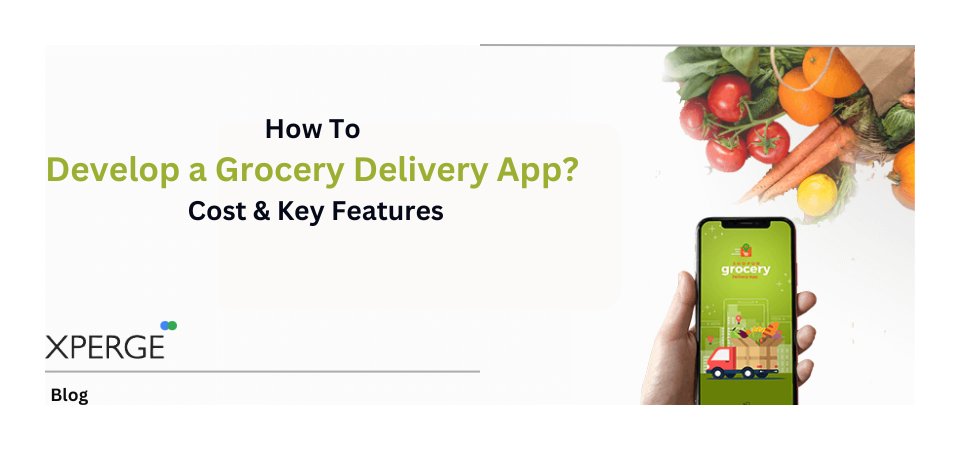Introduction
Let’s be honest: who wants to carry heavy grocery bags or stand in long checkout lines anymore? With everything from shoes to smartphones being delivered to our doorsteps, it’s high time grocery shopping caught up. If you run a physical grocery store, moving your business online isn’t just a trend — it’s a survival tactic and a golden opportunity to become market leaders.
The Digital Grocery Revolution
Online grocery shopping isn’t a niche anymore — it’s the norm. The pandemic acted as a catalyst, pushing millions of people to shop online for essentials. Even as the world opens up, convenience is king, and grocery delivery apps are thriving.
Customers love the ability to compare prices, access discounts, and avoid store crowds. In fact, online grocery sales are expected to surpass $250 billion by 2025 globally. So, if you’re still sticking to the old-school model, you’re leaving money on the table.
Key Takeaways
- Going Digital Is No Longer Optional: Moving your grocery store online helps you reach a wider audience, stay operational 24/7, and significantly reduce overhead costs.
- Choose the Right Business Model: Inventory-led, marketplace, and hyperlocal models each suit different goals and investment levels—pick one that fits your strategy.
- Clone and White Label Apps Save Time & Cost: Grocery clone apps and white-label solutions offer faster go-to-market with customizable features and branding.
- Features Make or Break the User Experience: Prioritize a user-friendly interface, real-time tracking, flexible payment options, and strong customer support in your grocery app.
- Marketing Drives Growth: Use SEO, social media, email, and push notifications to build brand awareness, retain customers, and grow sales consistently.
Why You Should Take Your Grocery Store Business Online
1. Expand Beyond Your Neighborhood
With a physical store, you’re limited to your locality. But online? You can reach customers across cities or even nationwide with efficient logistics.
2. Always Open, Always Selling
An online grocery store business works 24/7. Whether it’s 2 AM or a public holiday, your digital doors are always open.
3. Reduce Costs, Increase Profits
No more spending huge amounts on rent or utilities. You can even go fully virtual, storing inventory in warehouses and fulfilling via delivery partners.
Online Grocery Store Business Models
Choosing the right business model is crucial. Here are a few popular ones:
Inventory-Led Model
You manage the stock and fulfill orders from your inventory. This gives control but demands higher investment.
Marketplace Model
You provide a platform for local vendors to list products. You earn via commissions without handling stock directly.
Hyperlocal Delivery Model
Best for fresh produce. You tie up with local shops and deliver within hours using local delivery agents.
Features That Make a Winning Online Grocery Store
Your app or website should be more than a digital storefront. Here’s what it must have:
- User-Friendly Interface: Make it so easy even grandma can use it.
- Advanced Filters: Help users find products by brand, price, category, and dietary preference.
- Real-Time Tracking: People want to know exactly when their milk is arriving.
- Multiple Payment Options: Cards, UPI, wallets, and cash on delivery.
- Support Chatbots: Solve user queries instantly and reduce cart abandonment.
Different Kinds of App Development for Grocery Businesses
Native App Development
Built specifically for iOS or Android. High performance, but higher cost.
Hybrid App Development
Works across platforms. Saves cost and development time.
Progressive Web Apps (PWAs)
A web app that behaves like a native app. Light, fast, and doesn’t need to be downloaded.
Custom App Development vs Clone App Development
Custom Development
- Tailored exactly to your vision.
- More time-consuming and expensive.
- Ideal if you want unique features or branding.
Clone App Development
- Based on apps like Instacart, BigBasket, or Blinkit.
- Faster launch and lower cost.
- Easily scalable and customizable.
The Power of Grocery Clone Apps
Grocery clone apps are pre-built solutions modeled on successful apps. Think of them as a shortcut to market domination. They’re reliable, efficient, and come with all the bells and whistles you’d expect — search filters, delivery tracking, user profiles, and secure checkout.
Choosing the Right Clone App Development Company
Here’s how to pick the right partner:
- Experience in grocery apps — ask for case studies or demos.
- Customization flexibility — can they tailor features?
- Post-launch support — bugs are inevitable; who’s got your back?
- Transparent pricing — beware of hidden charges.
White Label Grocery Apps: A Smart Shortcut
White label apps are pre-built solutions you can brand as your own. You save development time and money while still getting a high-quality app with your logo, colors, and content.
Benefits?
- Quick launch
- Budget-friendly
- No technical expertise needed
On-Demand Delivery App Essentials
Your on-demand grocery app should include:
- Geo-location tracking
- Time slot-based delivery
- Push notifications
- Ratings & reviews
- Return/refund management
Speed is everything. If your delivery takes 4 hours and a competitor does it in 30 minutes, guess who wins?
Marketing Strategies to Become Market Leaders
You built the app. Now how do you get people to use it?
SEO and Local SEO
Optimize your website with keywords like “online grocery delivery near me” or “fresh vegetables home delivery.”
Social Media
Run Instagram Reels, partner with food bloggers, and post relatable memes. Stay top of mind!
Email & Push Notifications
Send out deals, restock alerts, and discount codes. Keep users engaged and ordering.
Real Success Stories of Online Grocery Stores
Instacart
Dominates the U.S. market by partnering with multiple grocery chains.
BigBasket
India’s leading grocery platform, now backed by Tata Group.
Blinkit
Known for lightning-fast delivery — often within 10 minutes!
These platforms started small and scaled using the models we’ve discussed.
Common Challenges and How to Overcome Them
1. Last-Mile Delivery Woes
Partner with hyperlocal delivery agents and optimize delivery zones.
2. Low Customer Retention
Offer loyalty programs, first-order discounts, and seamless UX.
3. Handling Refunds & Complaints
Have a clear, easy return policy and responsive support system.
Conclusion
Moving your grocery store business online isn’t just a smart move—it’s the future. Whether you go for custom app development, use a white label grocery app, or launch a grocery clone app, you’re setting your business up for long-term success.Go digital, stay competitive, and become a market leader in the booming world of online groceries.






